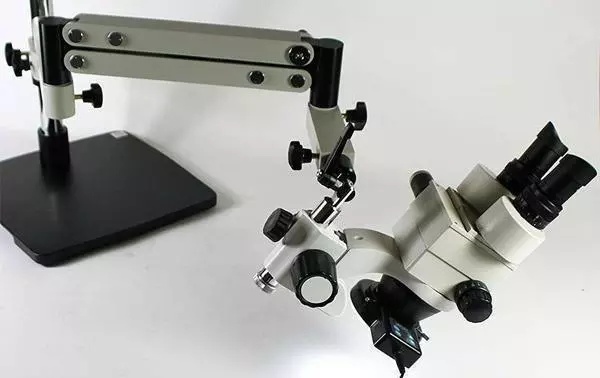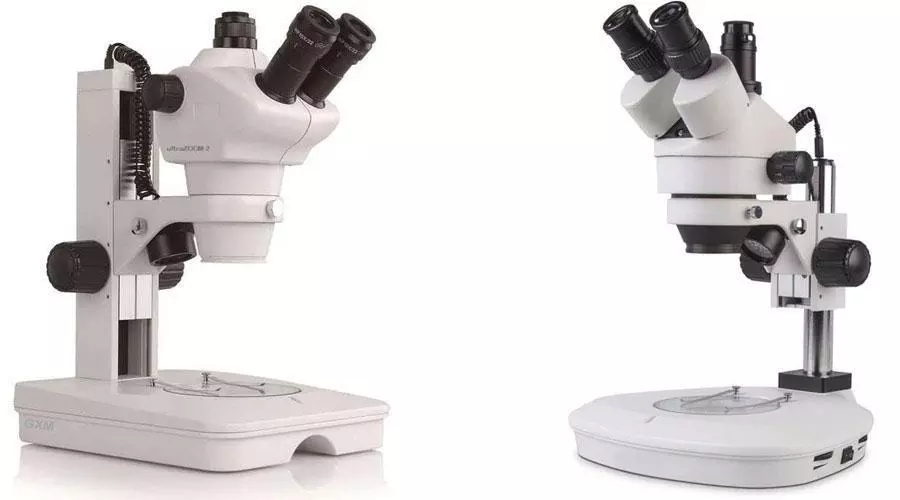Stereo Microscopes
Stereo microscopes, also known as low magnification and dissecting microscopes share a number of common, fundamental components.
Pair of Angled Objectives
By definition all stereo microscopes have these, they are typically hidden in the end/nose of the microscope, each objective connects to its own eyepiece. Because they are angled they give a ‘3D’ or ‘Stereo’ view of the subject.
Microscope Head
Sometimes called the ‘body’ this accommodates all optical components and any magnification changing mechanism. There are several types of microscope head, this is the main way that different types of stereo microscopes are classified , and priced, examples of all these types are included in this product range datasheet.
Single Magnification
To change magnification you have to remove and insert different objectives and eyepieces. This type of head typically has a rectangular objective holder.
Zoom Magnification
These are popular because you have a continuous range of magnifications controlled by a zoom knob eg 0.7X to 4.5X (total mags 7X to 45X with the std 10X eyepieces) and because you can also add auxiliary objectives eg 0.5X, 0.75X, 1.5X or 2X which change the zoom magnification range proportionately and also alter the working distance. This type of microscope can also have the largest range of illumination accessories attached such as ring lights. You can also obtain zoom microscopes with ‘trinocular heads’(T suffix) which gives the user an additional vertical photoport onto which a camera can be attached with the appropriate camera adapter. In summary zoom micros copes give the greatest range of magnifications, working distances, photo options, accessories and are the most convenient to use.

Stereo Microscope Illumination
Kemet offer a wide range of Illumination systems for stereo microscopes, monozoom microscopes, macro lenses and supplementary lighting. Products include;
- Fibre Optic Illumination Systems (Fibre optic Illumination systems comprise of two main components: Lamphouse and Fibre Optic Light Guide)
- LED Illuminators & LED Ring Illuminators (Providing excellent white colour temperature, cool light with very long lasting LED lamp life and minimal intensity decay over time)
- Spot Lamps (Available in a variety of formats and types of lamps. Th ey are a low cost solution for many inspection tasks)

